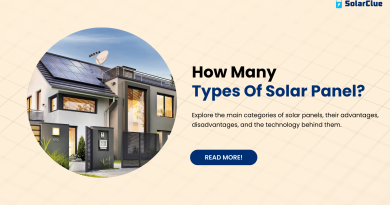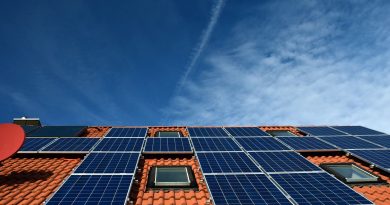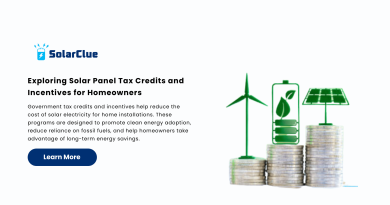How Do Floating Solar Panels Work?
As the global energy demand increases and the pressure to adopt sustainable solutions intensifies, floating solar panels have emerged as a promising innovation. These systems, installed on bodies of water, offer unique advantages over traditional ground-mounted or rooftop solar installations. This guide delves into the technology behind floating solar panels, their benefits, challenges, and potential to transform the energy landscape.
Table of Contents
- 0.1 1. The Concept of Floating Solar Panels and Their Advantages
- 0.2 2. How Floating Solar Systems Work: Construction, Installation, and Operation
- 0.3 3. The Environmental Benefits of Floating Solar Panels
- 0.4 4. Comparing Floating Solar to Traditional Ground-Mounted or Rooftop Systems
- 0.5 5. Challenges and Considerations for Floating Solar Projects
- 0.6 6. The Future of Floating Solar Technology and Its Potential
- 0.7 7. Case Studies of Successful Floating Solar Projects
- 0.8 8. The Role of Floating Solar Panels in Achieving Sustainable Energy Goals
- 1 FAQs About Floating Solar Panels
- 2 Comparison Table: Floating Solar vs. Ground-Mounted and Rooftop Solar Panels
- 3 Conclusion
1. The Concept of Floating Solar Panels and Their Advantages
Floating solar panels, also known as floating photovoltaic (FPV) systems, are solar power installations mounted on water bodies like lakes, reservoirs, and ponds. Unlike traditional systems, they float on water surfaces, offering several distinct advantages:
- Space Efficiency: Floating solar panels make use of underutilized water surfaces, conserving valuable land for agriculture, habitation, or natural ecosystems.
- Increased Efficiency: Water cooling beneath the panels can increase efficiency by reducing the temperature of the photovoltaic cells, which typically perform better in cooler conditions.
- Reduction in Water Evaporation: By covering the water surface, floating solar panels reduce evaporation, preserving water in reservoirs, especially in arid regions.
- Minimal Land Use: These systems are particularly beneficial in densely populated or land-scarce regions where finding large tracts of land for solar farms is challenging.
2. How Floating Solar Systems Work: Construction, Installation, and Operation
Floating solar systems are designed to operate on water surfaces, and their construction involves several key components:
- Buoyant Platforms: The panels are mounted on buoyant structures, often made of high-density polyethylene (HDPE) or other durable, water-resistant materials. These platforms are anchored to the bed of the water body to prevent drifting.
- Solar Panels: The photovoltaic panels used in floating systems are similar to those in traditional installations, but they are often designed to withstand harsher environments, such as higher humidity and potential corrosion from water exposure.
- Anchoring and Mooring Systems: These systems secure the floating platforms in place, accommodating water level fluctuations and ensuring stability against wind and waves.
- Electrical Systems: Floating solar systems are connected to the grid through underwater cables, requiring specialized installations to prevent water ingress and ensure safety.
3. The Environmental Benefits of Floating Solar Panels
Floating solar panels offer several environmental advantages, making them an attractive option for sustainable energy production:
- Land Conservation: By utilizing water surfaces, floating solar systems avoid the need for large land areas, preserving natural habitats and agricultural land.
- Reduced Water Evaporation: Covering water bodies with solar panels can significantly reduce evaporation rates, conserving water resources, especially in reservoirs and irrigation ponds.
- Algal Growth Control: The shading effect of the panels can reduce the growth of algae in water bodies, improving water quality and reducing the need for chemical treatments.
- Synergy with Hydropower: Floating solar systems can be installed on hydropower reservoirs, creating a synergistic relationship where solar power complements hydroelectric generation, especially during dry seasons.
4. Comparing Floating Solar to Traditional Ground-Mounted or Rooftop Systems
Floating solar panels offer unique benefits compared to traditional installations:
- Efficiency: The cooling effect of water can enhance the efficiency of floating solar panels by reducing the operating temperature of the photovoltaic cells.
- Space Utilization: Floating systems make use of otherwise unused water surfaces, whereas ground-mounted systems require significant land, and rooftop installations are limited by roof space.
- Environmental Impact: Floating systems have a lower impact on land use and can contribute to water conservation, whereas ground-mounted systems may require clearing vegetation and altering land use.
5. Challenges and Considerations for Floating Solar Projects
While floating solar panels offer numerous benefits, there are challenges and considerations to address:
- Water Depth and Quality: The depth of the water body affects the design and anchoring of the floating system. Additionally, water quality, including salinity and debris, can impact the durability and maintenance of the panels.
- Regulatory and Permitting Issues: Navigating regulatory frameworks and obtaining permits for water-based installations can be complex and vary by region.
- Installation and Maintenance Costs: While floating solar systems can be more efficient, they may also have higher installation and maintenance costs due to the specialized nature of the equipment and the challenges of working on water.
- Environmental Impact on Aquatic Life: Careful consideration is needed to minimize the impact on aquatic ecosystems, including potential disruptions to fish habitats and water temperature changes.
6. The Future of Floating Solar Technology and Its Potential
Floating solar technology is poised for significant growth as advancements in materials, design, and installation methods continue to emerge. The future of floating solar includes:
- Hybrid Systems: Combining floating solar with other renewable energy sources, such as hydropower, to create hybrid energy systems that maximize efficiency and resilience.
- Expansion to New Markets: As technology improves and costs decrease, floating solar systems will become more accessible to developing countries and regions with limited land resources.
- Innovations in Materials: Research into new materials that are more durable, cost-effective, and environmentally friendly will drive the next generation of floating solar panels.
7. Case Studies of Successful Floating Solar Projects
- Anhui Province, China: One of the world’s largest floating solar farms, this project in China’s Anhui Province has a capacity of 150 MW and demonstrates the scalability and efficiency of floating solar technology.
- Kayamkulam Floating Solar Plant, India: This 92 MW project in Kerala, India, is one of the largest in the country and exemplifies the potential of floating solar in regions with high water availability.
- Walden-Jackson Floating Solar Farm, USA: Located in Colorado, this 4 MW project is the largest floating solar installation in the United States, showcasing the viability of floating solar in diverse climates.
8. The Role of Floating Solar Panels in Achieving Sustainable Energy Goals
Floating solar panels play a critical role in achieving global sustainable energy goals:
- Diversification of Energy Sources: Floating solar adds another dimension to the renewable energy mix, helping to diversify energy sources and increase overall resilience.
- Contribution to Carbon Reduction Targets: By expanding solar capacity without using additional land, floating solar systems contribute to global carbon reduction targets, supporting efforts to combat climate change.
FAQs About Floating Solar Panels
Q1: What are floating solar panels?
A1: Floating solar panels are photovoltaic systems installed on water bodies, offering an alternative to traditional land-based solar installations.
Q2: How do floating solar panels compare in efficiency to ground-mounted systems?
A2: Floating solar panels can be more efficient due to the cooling effect of the water beneath them, which reduces the temperature of the panels and improves performance.
Q3: What are the environmental benefits of floating solar panels?
A3: Floating solar panels conserve land, reduce water evaporation, control algal growth, and can be installed on existing water bodies without disrupting land use.
Q4: What challenges are associated with floating solar projects?
A4: Challenges include higher installation and maintenance costs, regulatory hurdles, water quality issues, and potential environmental impacts on aquatic ecosystems.
Q5: Are floating solar panels more expensive than traditional solar installations?
A5: Floating solar panels can be more expensive due to specialized equipment and installation processes, but the long-term benefits, such as increased efficiency and land conservation, can offset these costs.
Q6: What types of water bodies are suitable for floating solar panels?
A6: Suitable water bodies include reservoirs, lakes, ponds, and even abandoned mining pits. The water body should have stable conditions and sufficient depth for anchoring the system.
Comparison Table: Floating Solar vs. Ground-Mounted and Rooftop Solar Panels
| Feature | Floating Solar Panels | Ground-Mounted Solar Panels | Rooftop Solar Panels |
|---|---|---|---|
| Land Use | No land required; utilizes water surfaces | Requires significant land | Utilizes existing rooftop space |
| Efficiency | Higher efficiency due to water cooling | Standard efficiency | Varies with roof angle and shading |
| Installation Cost | Generally higher due to specialized equipment | Moderate | Lower, as rooftops are pre-existing structures |
| Environmental Impact | Reduces water evaporation, conserves land | Can involve land clearing | Minimal, but may require structural adjustments |
| Maintenance | More complex due to water-based location | Easier access for maintenance | Easier access but may involve roof safety concerns |
| Regulatory Challenges | Complex, involves water rights and environmental permits | Varies by location and land use | Generally simpler, but may involve local building codes |
| Scalability | High, especially in regions with abundant water bodies | High, but limited by available land | Limited by available rooftop space |
Conclusion
Floating solar panels represent a significant advancement in solar technology, offering unique benefits that make them a viable option for expanding renewable energy capacity without competing for land resources. As technology advances and the benefits become more apparent, floating solar systems will play a crucial role in the global transition to sustainable energy. With successful projects already in operation and more on the horizon, floating solar panels are set to become a key component of the world’s renewable energy infrastructure.
This guide serves as an essential resource for anyone interested in understanding the technology, benefits, and future potential of floating solar panels.



